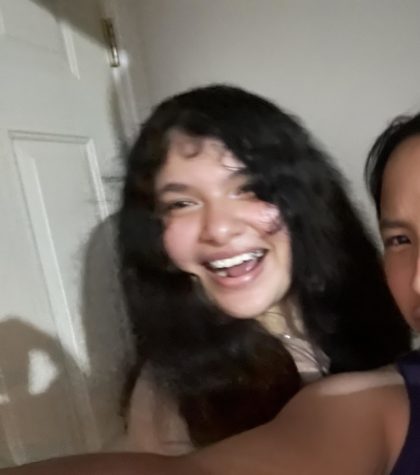Latino students deserve more support from ETHS
December 13, 2019
Life as a Latino student at ETHS and in general isn’t the best. Every time I walk into my classes here, it’s not hard to notice the limited diversity in races. In fact, in one of my classes, there’s only one Latino student (me).
“My opinion is that Latinos feel they do not belong,” Spanish teacher Iciar Niharra says.
The limited representation puts a strange amount of pressure on us Latino students about not proving the stereotypes right. If you get anything wrong or do something bad in the class where you’re the only one, you’re proving the “stupid Latino” stereotype right, but if you get everything right and try your best, then you get backhanded “compliments” from your white peers like “You’re not like the other Latino kids; you actually try” or “You don’t have that disgusting accent like the other Latinos.” These are things white students told me in middle school and have stayed with me until today. I’ve had white kids tell me how I’m plain out wrong in my opinion on certain subjects and instead of letting me explain why I think this way, they cut me off and expect me to see things their way. These are the kinds of microaggressions and the sometimes unintentional racist remarks Latino students have to deal with in hostile classrooms and school spaces. In middle school, for example, I didn’t like walking in hallways where I knew kids were saying the words “beaner” or “spic” and speaking behind my back, and using these types of stereotypes and assumptions to judge my work.
In addition to microaggressions Latino students face from students, they also have negative experiences with teachers.
“Teachers set low standards for Latino students,” freshman Karen Rodriguez says.
What Rodrigeuz says struck a chord in me due to the fact that I also have experienced this type of problem in many of my classes since a young age in a school environment.
“I have noticed that some of my teachers expect more from white students. I had a teacher last year who made sure their white students were working hard, and it didn’t seem like he expected as much from his students of color,” sophomore Diana Nava says.
In middle school, I’ve annoyingly experienced what Nava describes when teachers assume what I can and can’t do based on my Spanish. I’ve had teachers and parents be surprised by my love for writing and ask me how I learned English so well. I’ve felt like some teachers diminish my ideas and cut me off in class just because of my skin tone. How am I supposed to be in a learning environment when all I’m getting out of these areas are racist remarks and surprised faces? The bar is set so low for Latino students that you can’t even pick it up anymore. These stereotypes and whispered racist remarks are engraved on the skin where it becomes the only thing you see.
While I’ve had some negative educational experiences that still impact me today, one of my most positive experiences so far would be with having a teacher I can relate too and other Latino students in class as well. Now, these teachers were mostly Latino and showed a great zero-tolerance policy on racism in the class, such as by being open about their own personal experiences with discrimination and establishing norms for a safe classroom early on. With teachers like this, the class became a safe haven for myself and other students. I had no fear of facing these stereotypes or assumptions since the class was taught by someone who understood racism, and there were students who also faced these problems.
“I identify as a white Hispanic. My experience has also been very positive [at ETHS],” Niharra says. “We are growing. We are growing a sense of belonging, but we are working on it. The LatinX students, staff and families are really working to fight our invisibility. I appreciate that in this school, there is a willingness.”
Overall, racism in school has influenced me. Most of my experiences have caused me to rethink how I deal with a situation where I am the only Latino in a class or how the teacher might view me. I am cautious about how I want to present myself in these classrooms where I’m the only one.
The rise of Trump’s infamous quote on Mexican immigrants — “They’re bringing drugs. They’re bringing crime. They’re rapists” has helped xenophobic and flat-out racist people be more open with the assumptions and stereotypes Trump mentions. Of course, schools, in general, do notice this rise of racism, and they decide to talk about it in class, except this talk about racism is hidden by the word “equity.” While the whole conversation should be about how to be more fair to your fellow peers and how teachers need to set a safe environment, it ends up congratulating white students for not being racist.
These flawed talks about “equity” need to go and just begin with a fundamental practice: stop being racist to your fellow students. Equity conversations shouldn’t be sugar-coated so as not to end up hurting white students’ feelings. These conversations need to be straight to the point and give everyone an opportunity to voice their thoughts. Teachers need to have these conversations in their classrooms, establish norms early on and keep revisiting them to help make the classrooms a safer place; students need to stay engaged in these conversations in order to create a more equitable ETHS.
*A corrected version of this article was republished on December 18th; an earlier version misquoted Niharra.








